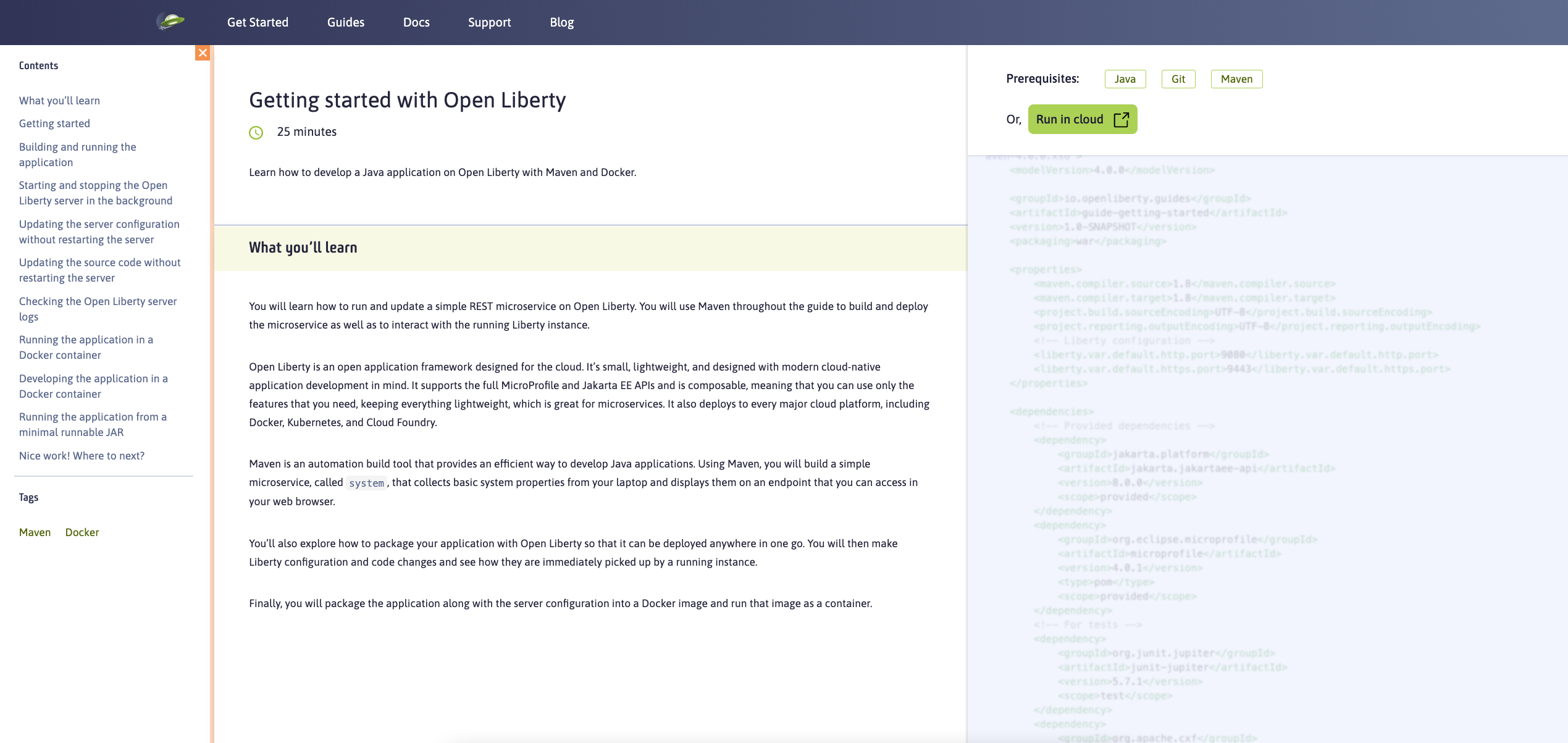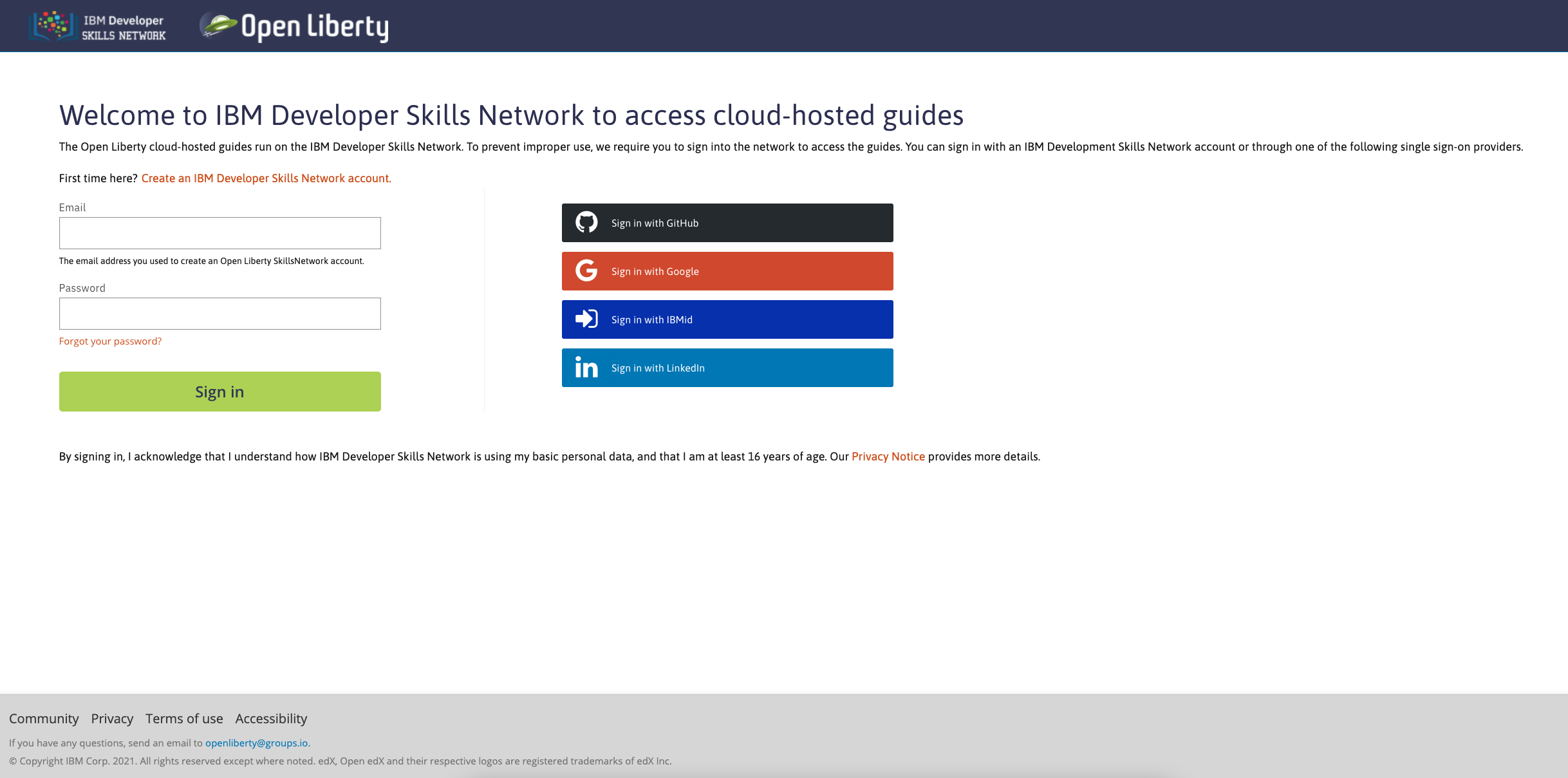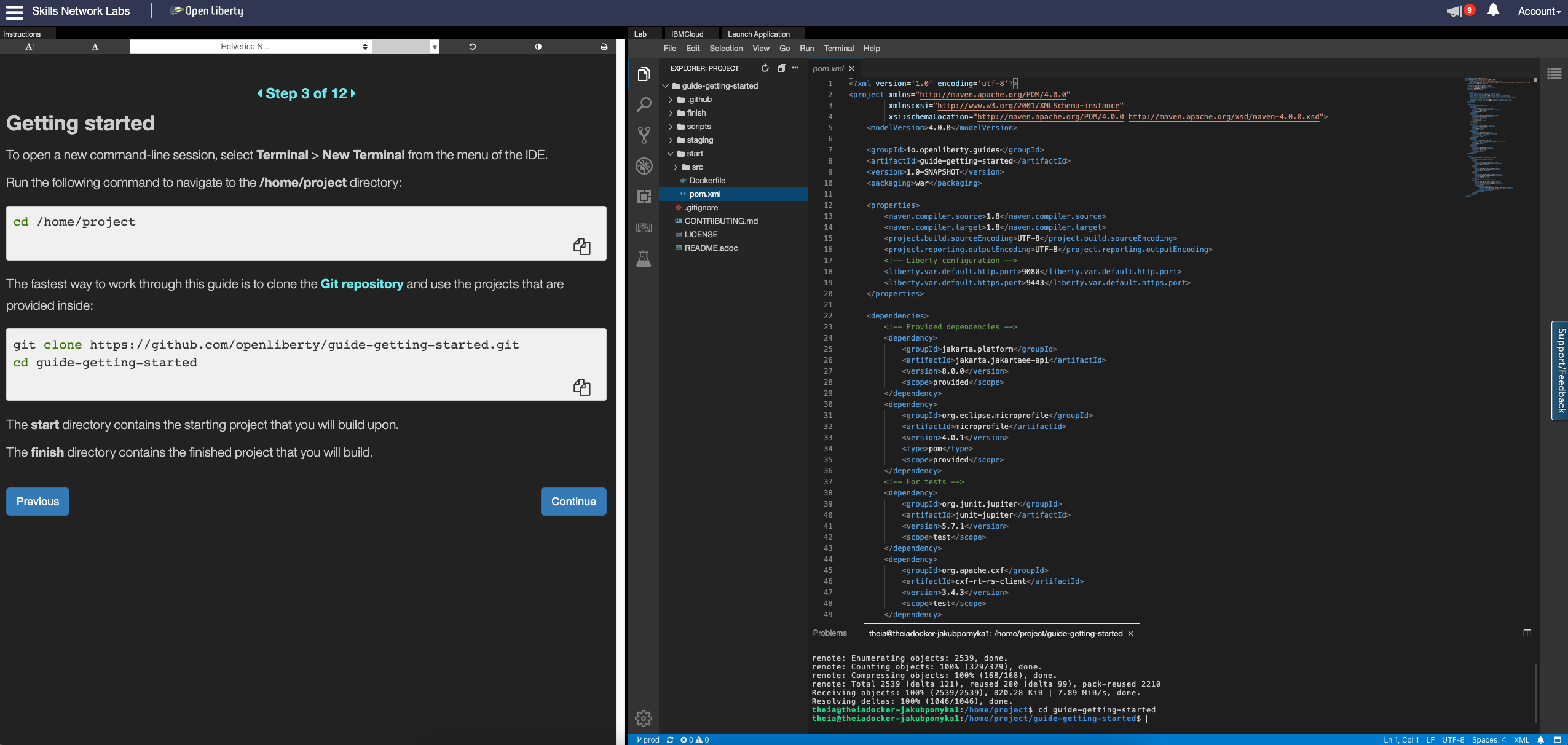 See all blog posts
See all blog posts
Interactive developer guides running in the cloud
Our team of engineers have been hard at work creating new content for developers to enjoy. We now have 57 different guides on a range of topics covering development, build, testing, and deployment of cloud-native Java applications and microservices. These help developers quickly get started learning various Java and cloud technologies with Open Liberty. Excitingly, you can now run our guides in a hosted environment, without having to worry about local setup and prerequisites. You can access these cloud-hosted guides by going to our guides page, selecting a guide, and clicking the Run in cloud button, as shown in the following image:

What guides are available?
We are now live with 22 guides you can try out in the cloud:
-
Consuming a RESTful web service using MicroProfile Rest Client.
-
Providing metrics from a microservices using MicroProfile Metrics.
-
Securing microservices with JSON Web Tokens using MicroProfile JWT.
-
Consuming RESTful services asynchronously with template interfaces.
-
Acknowledging messages using MicroProfile Reactive Messaging.
-
Enabling distributed tracing in microservices with Zipkin microprofile-health.
-
Testing a MicroProfile or Jakarta EE application with MicroShed Testing.
How to get started
It is easy to get started once you click the previously mentioned Run in cloud button. You will be taken to a login page for the cloud environment. From here, you can log in or create a new account. We require only minimal information for you to get going. You can also use social logins to create an account and then use that later to log in quickly.

Once you are logged in, you are directed to the landing page for the guide you wish to learn. Simply click the Access cloud-hosted guide button and after a few minutes your environment should be set up and ready to use.
What is the cloud environment and why are we using it with our guides?
The cloud environment we are using for these interactive guides is a learning platform that you access through your browser. It runs in containers that are deployed to OpenShift in the IBM Cloud. This allows us not only to teach users how to build great cloud-native applications but also demonstrates in practice how to interact with the deployment environment.
The hosted environment is provided by the IBM Skills Network. These interactive guides wouldn’t be possible without the support and help of the IBM Skills Network team. A shoutout and thank you to them!

This environment gives you access to all the tools required to build cloud-native applications, such as Docker, Kubernetes, OpenShift, Maven, Gradle, OpenJDK with Eclipse OpenJ9 VM, the open-source Eclipse Theia IDE, and of course, Open Liberty.
Using Open Liberty guides in the cloud
The environment is quite easy to use with both your instructions and your IDE with a terminal displayed on the same screen. Each guide has different steps with instructions that you can copy straight to your clipboard by clicking the copy button  . By using the panel at the beginning of the instructions frame, you can change the font, font size, or whether the instructions display in light or dark mode. You can also resize the instruction and IDE frames to suit your screen by dragging on the edge of the frames.
. By using the panel at the beginning of the instructions frame, you can change the font, font size, or whether the instructions display in light or dark mode. You can also resize the instruction and IDE frames to suit your screen by dragging on the edge of the frames.
This environment uses an IDE called Eclipse Theia, which is It is very similar to VS Code. You can open new terminals by clicking on the terminal tab and selecting New Terminal. In the IDE frame you have the projects button  that will allow you to navigate through your project and open files in the IDE, once you have cloned down the repo for the guide. Maven, Gradle, Docker, and Kubernetes are all available in the terminal with their normal respective commands.
that will allow you to navigate through your project and open files in the IDE, once you have cloned down the repo for the guide. Maven, Gradle, Docker, and Kubernetes are all available in the terminal with their normal respective commands.
Once you finish a guide, you need to log out using the Account button in Skills Network menu bar so that next time you log in you will have a clean environment. If you don’t log out, the environment cleans up automatically after 30 minutes of inactivity.
Help us help you
You’re welcome to propose new guides by raising an issue and writing an outline for consideration. Especially let us know if you can contribute in some way once the guide has been accepted, whether that’s by writing the guide, writing some code, or both. If you see any errors in our existing guides, feel free to raise an issue against that guide’s GitHub repository or create a PR to fix it. Each guide has its own repository, which you can find in the guide text. To stay up to date with our new guides, follow us on Twitter (@OpenLibertyio) or bookmark new guides.
Your feedback is welcomed
Tell us about your experience with our guides by responding to the questions in the Where to next? section at the end of each guide. We’d love to hear from you!




